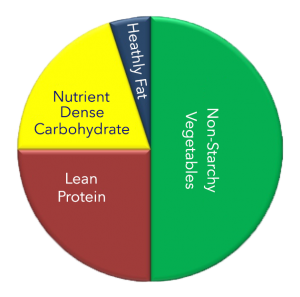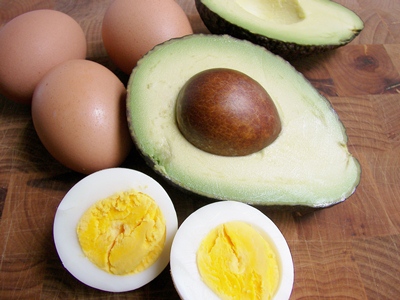In this previous post, we discussed what insulin resistance is and how to recognize it…and then you were left hanging wondering how to prevent, manage or reverse it! No fear, part two is here where we we’ll cover lifestyle interventions to help “fix the doorbell,” allowing normal insulin signaling to occur while improving your body’s sensitivity to insulin.
Break the cycle of insulin resistance today with this 7 Step Protocol #insulinresistance #saslife Click To TweetBefore we dive, let’s do a quick refresher. Insulin is a hormone produced by the pancreas that helps regulate blood sugar, turn food into energy and store excess glucose for later use. When insulin isn’t working properly, a condition called insulin resistance can develop where cells no longer appropriately respond to insulin. Your cells then don’t hear the signal and don’t call your pancreas to release the appropriate amount of insulin needed – no matter how many times insulin tries to knock (like Sheldon from Big Bang Theory!).
7 Step Insulin Resistance Protocol
Now that we’re all on the same page, let’s discuss 7 steps to naturally manage insulin resistance. Each component of the following protocol works to balance blood sugar, support a healthy inflammatory response and optimize insulin levels – essential in addressing, preventing and reversing insulin resistance.
#1 Choose Nutrient Dense Carbohydrates in Appropriate Amounts
Carbohydrates are simple sugars or a long chain of sugars linked together to form starch or fiber. Sugars and starches are easily digestible carbohydrates that fuel our cells with energy.
Focus on the quality and quantity of carbohydrates consumed.
- Nutrient dense, unrefined carbohydrates contain sugar and starches as part of foods that exist in nature. They are naturally high in fiber and full of vitamins, minerals and protein. Choose these, in the right amount for your body, more often.
- Processed, refined carbohydrates are sugar and starches that have been taken out of foods found in nature and altered through processing techniques to “refine” them. They are low in fiber, vitamins, minerals and protein, and when eaten in excess, can wreak havoc on blood sugar, insulin and energy levels (just like sugar does!). Limit these.
Opt for nutrient dense, low glycemic foods.
Aim for ½ plate worth of colorful non-starchy vegetables (organic when possible) and balance the rest of the plate with:
- Quality protein (grass-fed, pasture-raised meats and wild-caught seafood when possible)
- Healthy fats (raw nuts and seeds, avocado, cold pressed olive oil)
- Nutrient dense, unrefined carbohydrates (sweet potatoes, quinoa, brown rice, whole fruit)
Limit or avoid:
- Processed carbohydrates (white rice/bread/pasta, chips, pretzels, pastries, etc.)
- Added sugar
- Artificial sweeteners
#2 Anchor Your Carbs
- Always include protein, fat and fiber when you eat – the perfect trifecta for blood sugar and insulin management!
- These foods take longer to digest and help avoid glucose and insulin swings.
- Aim for 25-40 grams of protein per meal (more if you skip meals), or a total of 90-120 grams daily.
#3 Pay Attention to the Timing of Food
- Avoid grazing. If you’re constantly eating and drinking sweetened beverages throughout the day, your body will be constantly producing insulin. Eat intentionally/mindfully, not while distracted. If able, skip snacking in between meals.
- Eat earlier in the day. Foods consumed later in the evening cause an increased insulin response compared to those same foods eaten early in the day.
- Fast intermittently. Fasting creates extended periods of low insulin that maintains the body’s sensitivity to insulin. In general, aim for at least a 12 hour overnight fast (starting the clock earlier in the evening for even better results). However, some may benefit from more extended fasts to help restore the body’s sensitivity to insulin. Always check with your health care provider or registered dietitian before starting a fasting regimen.
#4 Move More
- Regular exercise improves insulin sensitivity and metabolism.
- Start simple by moving more throughout the day – take the stairs, walk in place while watching television, choose parking spots further out, etc.
- Work up to incorporating a variety of cardio, strength training and flexibility activities on a regular basis. Use those muscles!
#5 Master Your Sleep
- Inadequate sleep disrupts hormones and increases insulin resistance.
- Aim for 7-9 hours of good quality sleep nightly – sleep heals and lowers inflammation.
- Maintain a healthy circadian rhythm which helps improves whole-body insulin sensitivity.
#6 Manage Stress
- Chronic stress triggers your body to dump MORE sugar into the blood, adding to the vicious cycle of insulin resistance.
- Rewrite your relationship with stress. Have a variety of stress management tools in place such as meditation, coherence, yoga, deep breathing or even play.
#7 Reduce Hormone Disrupting Toxins
- Pay attention to food quality (organic, grass-fed, pasture-raised, wild-caught).
- Use safer/less toxic cookware (glass, cast iron, etc.).
- Limit plastics.
- Choose cleaner personal care products (toothpaste, shampoo, etc.). You can reference the Environmental Working Group’s Skin Deep database for recommendations.
- Avoid items that have “fragrance” listed in the ingredients.
Breaking the Cycle
Slowing down or reversing insulin resistance requires sustainable lifestyle changes, so start small. Think about the above 7 step protocol and where you feel your weakest link is. Modify that link and then continue to layer on other strategies to ultimately balance blood sugar, support a healthy inflammatory response and optimize insulin levels.
Honey Balsamic Chicken and Brussels Sprouts
Makes 4 servings
Recipe from: With the Woodruffs
PRINT RECIPE
Ingredients
1 lb ground chicken breast
12 oz shaved brussels sprouts*
1 Tbsp olive or avocado oil
For the sauce
1/3 cup balsamic vinegar
1 Tbsp honey, or to taste
2 Tbsp whole grain mustard
salt and black pepper, to taste
Directions
- Mix sauce ingredients together and set aside.
- Heat oil in a large skillet over medium-high heat.
- Add brussels sprouts and sauté for 4-5 minutes. Remove from skillet and transfer to a bowl. (If using halved or quartered sprouts, cook a few minutes more.)
- Add ground chicken to skillet and cook until golden brown and fully cooked.
- Stir in sauce, cooking until it thickens, about 1-2 minutes.
- Turn off the heat and add brussels sprouts.
- Taste and season with salt and pepper, if needed.
- Serve as is or over cauliflower rice or brown rice.











